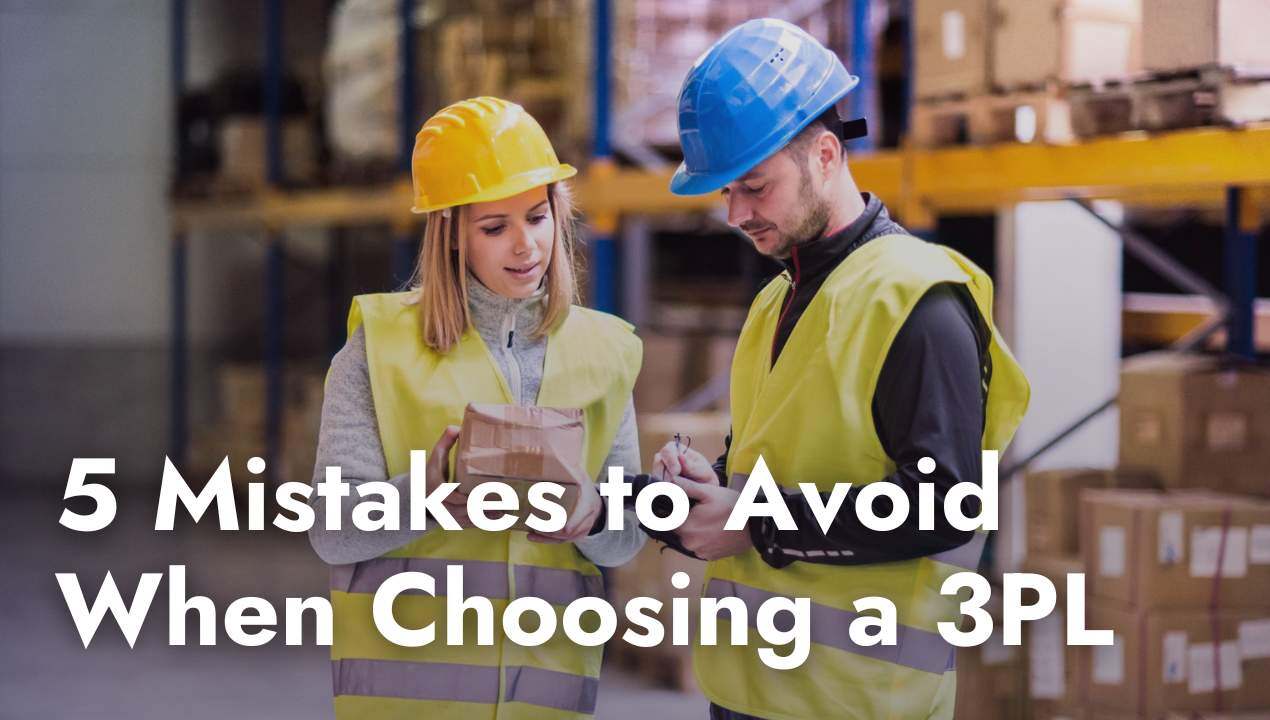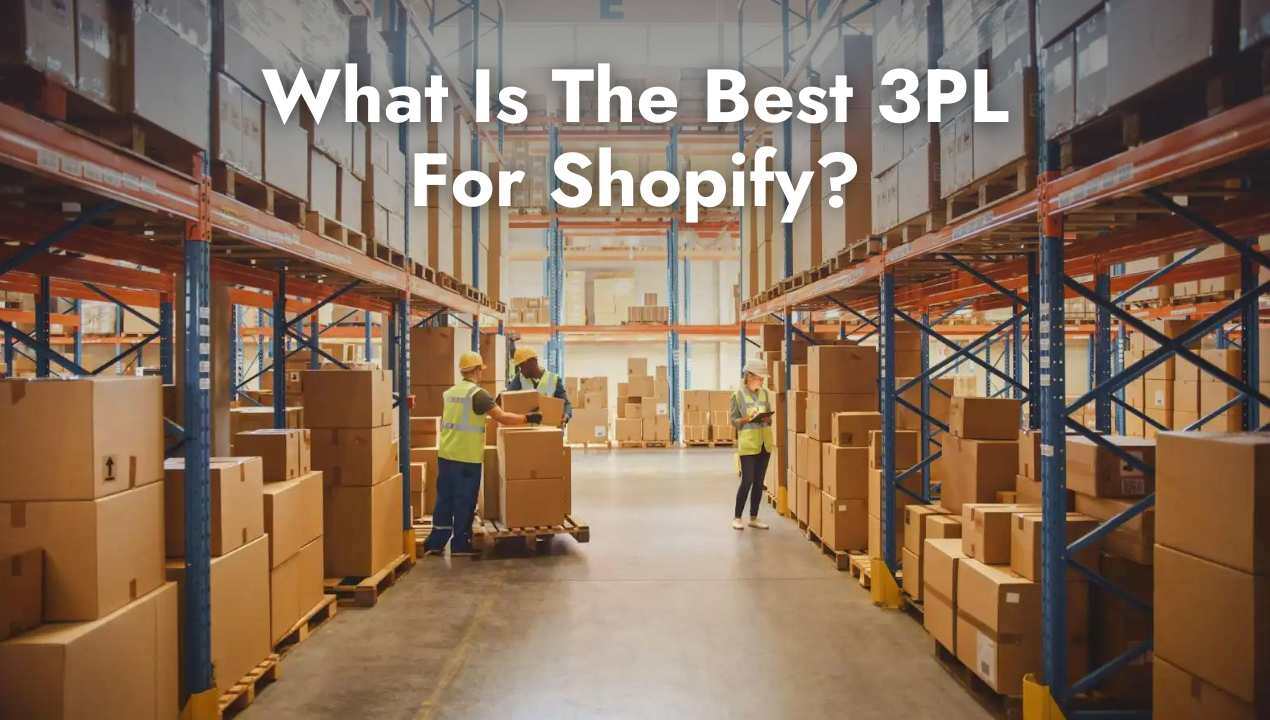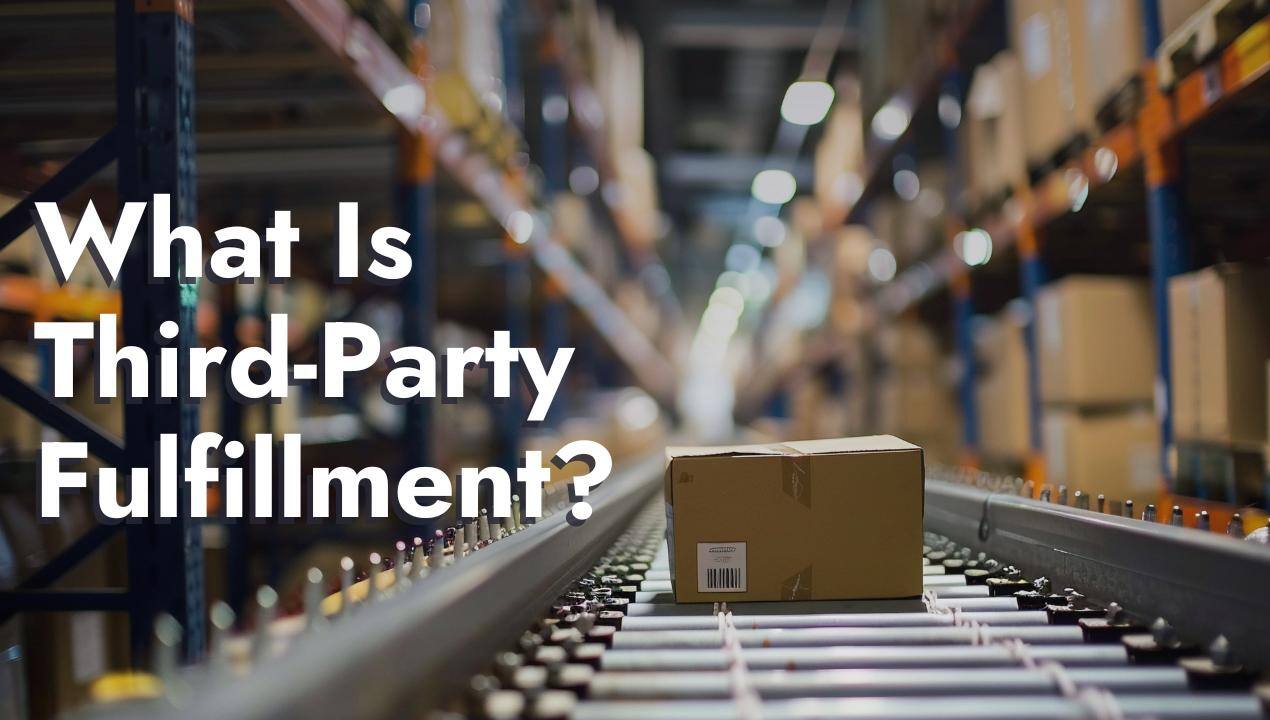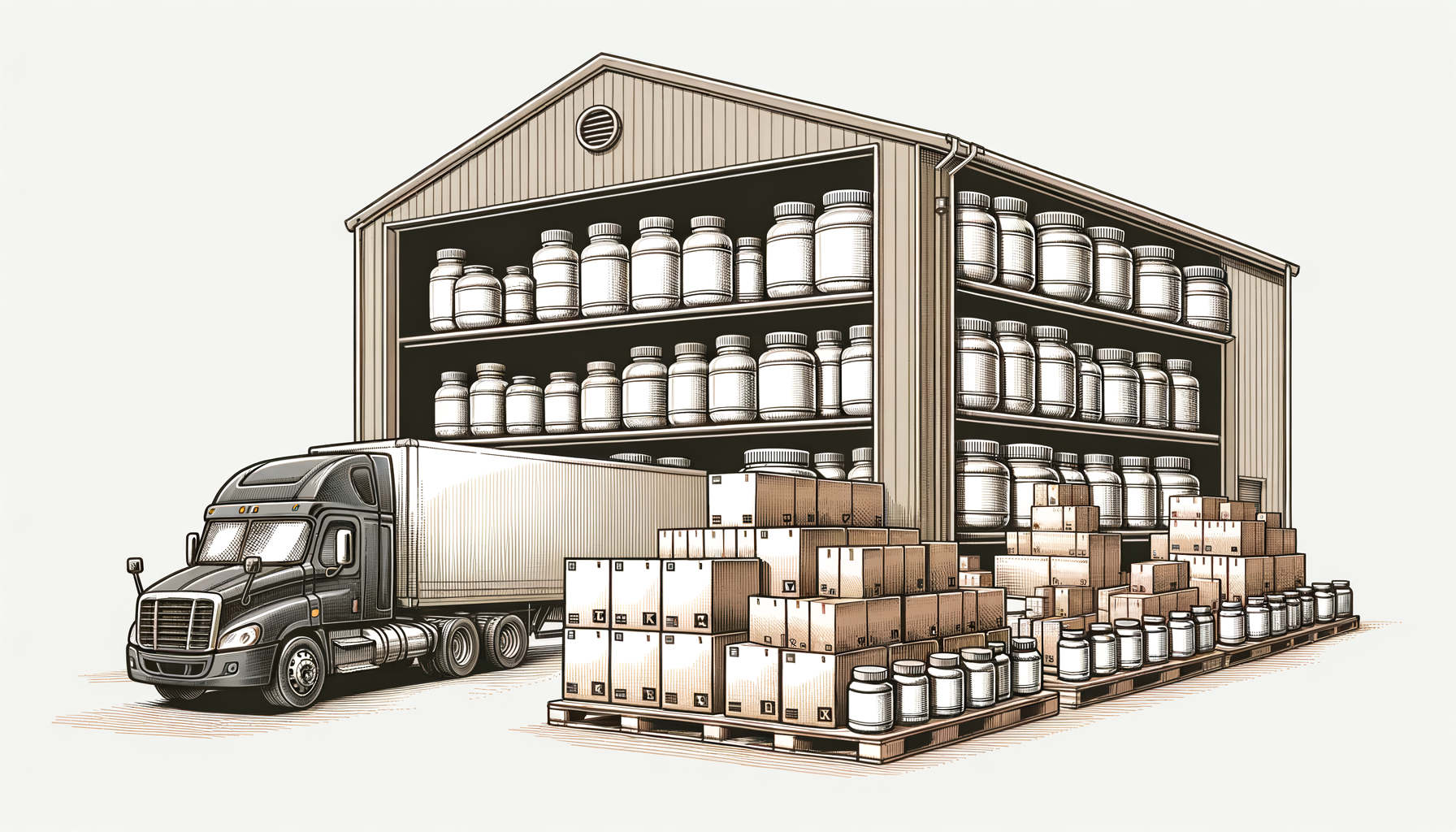Share this
5 Mistakes to Avoid When Choosing a 3PL
by Rin Mosher on Nov. 18, 2024

Choosing a new pair of shoes at the store? Easy. Choosing a 3PL to trust with your ecommerce business’ fulfillment operations? Not so much.
The decision to work with a 3PL is a smart one, considering all of the benefits outsourced support has to offer. But it requires another important decision – choosing the best 3PL for your needs. Relationships with service providers can be strong and long-lasting if they’re established with the right things in mind. You need to not only know what to look for but also what to avoid in a potential partner.
This article focuses on the latter, outlining five all-too-common mistakes made by businesses when choosing a 3PL.
1. Basing Your Decision Solely on Price
It’s natural to prioritize price when evaluating 3PLs – your decision to outsource probably started with a careful comparison of the cost of a 3PL vs. the cost of in-house logistics. But remember that you get what you pay for. Focusing solely on price limits service options and usually quality as well. It can also be restrictive to your business’ growth. While some lower-cost 3PLs may be adequate for simpler operations, mid-size and growing ecommerce brands often need more specialized support to handle complex requirements.
For example, a fulfillment partner offering bargain rates may lack the resources to invest in rigorous staff training, resulting in lower order accuracy or slower turnaround times. Over time, issues like incorrect shipments, damaged products, or delays can erode customer trust and increase costs. On the other hand, higher-cost 3PLs often invest in proprietary technology, well-trained teams, and innovative solutions that improve operational efficiency and reliability.
Why It’s a Mistake
Choosing based on cost alone can lead to:
- Limited services, such as basic pick-and-pack operations, with no value-added offerings.
- Higher long-term costs from returns, mistakes, and missed growth opportunities.
- Difficulty managing peak season demand due to lack of scalability or operational efficiency.
How to Avoid This Mistake
- Look for 3PLs that offer value-added services like custom packaging, kitting, and proprietary technology.
- Ask about their support structure, such as dedicated account managers and carrier relationships.
- Evaluate their experience handling peak season volumes and their track record with businesses similar to yours.
By choosing a reliable, higher-quality 3PL, you’ll gain fewer errors, stronger customer satisfaction, and scalable operations that support long-term growth.
2. Failing to Future-Proof
Partnering with a 3PL that meets only your current needs may seem practical, but it can create significant challenges as your business grows. If your provider can’t scale with increased order volume, adapt to new fulfillment channels, or support complex operations, you risk operational bottlenecks that stifle growth.
Picture this: your ecommerce store is growing steadily, and suddenly, you’re offered a lucrative B2B deal with a major retailer. B2B and wholesale order fulfillment requires specialized expertise – what if your 3PL doesn’t have it? That could mean facing expensive chargebacks or even losing the contract altogether.
Why It’s a Mistake
Choosing a 3PL without future-proofing considerations can lead to:
- Costly and disruptive transitions to a new provider once your business outgrows the current one.
- Missed opportunities for growth due to limited capabilities in handling B2B or cross-channel fulfillment.
- Operational inefficiencies that hurt customer satisfaction and business performance.
How to Avoid This Mistake
Prioritize capacity and versatility – both are business scaling must-haves. With a versatile, growth-oriented partner, you’ll enjoy the peace of mind that comes from knowing you’re supported by fulfillment experts who can help you navigate each new chapter ahead.
Great places to start:
- Assessing the 3PL’s scalability by evaluating their warehousing capacity, technology, and operational flexibility.
- Ensuring they have experience in fulfilling B2B and wholesale orders, adhering to routing guidelines, and managing bulk shipments.
- Choosing a provider with versatile service offerings, such as custom packaging, subscription box fulfillment, or kitting, to future-proof your operations.
3. Forgetting About Onboarding
Just like it is for a new employee, onboarding is a fundamental element of success in 3PL relationships. A missed detail during onboarding can snowball into delays, lost inventory, and frustrated customers – all of which impact your bottom line and damage your brand’s reputation.
Treating onboarding as an afterthought often leads to weeks of playing catch-up, trying to resolve issues that could have been prevented with proper planning. A thorough onboarding process may take a little extra time initially, but it pays off by reducing errors, minimizing customer complaints, and ensuring a smooth launch.
Why It’s a Mistake
Neglecting onboarding can lead to:
- Delays caused by unresolved setup issues, such as mismatched billing or untested integrations.
- Lost inventory or incorrect shipments due to incomplete SKU or packing details.
- Poor system adoption, leaving your team ill-prepared to manage orders or troubleshoot issues.
How to Avoid This Mistake
- Plan for a thorough kickoff: Addressing operational essentials such as billing details, key contacts, packing requirements, and expected order volumes during the onboarding phase.
- Test integrations early: Ensure that systems like Shopify, Amazon, or TikTok Shop are fully integrated and functional before going live to avoid disruptions during actual orders.
- Familiarize your team with tools: Schedule demos or training sessions to learn the 3PL’s fulfillment dashboard, order management system, and billing platform, so your team feels confident using them.
4. Assuming a Closer Location Is Better
It’s easy to assume that working with a 3PL near your headquarters is the most convenient option. However, this approach often overlooks what really matters: getting products to your customers quickly and cost-effectively. As your business grows, your customer base will likely spread across different regions, making a fulfillment partner with strategically placed warehouses far more valuable than proximity to your office.
Having multiple, strategically located warehouses means shorter delivery journeys, cheaper shipping options, and being better able to mitigate regional disruptions. It can also result in faster turnaround times. Where a 3PL operating warehouses from 8 AM to 4 PM on the East Coast only would have 8 hours of service per day, a 3PL with additional warehouses on the West Coast – with the same operational hours but in a different time zone – would be fulfilling orders for a total of 11 hours across all warehouses. With a high volume of orders, over time, that has the potential to make a big impact on turnaround times for customers.
Why It’s a Mistake
Choosing a 3PL based solely on location near your business can lead to:
- Longer delivery times for customers outside your local area, increasing shipping costs and frustration.
- Limited reach and slower service during peak times or regional disruptions.
- Missed opportunities to expand efficiently into new markets.
How to Avoid This Mistake
- Prioritize customer proximity: Look for a 3PL with warehouses near your largest customer bases to reduce transit times and costs.
- Opt for a distributed network: Choose a 3PL with facilities across different regions or time zones to improve delivery speed and resilience against localized issues.
- Consider operational hours: Warehouses in multiple time zones can extend your order fulfillment window, allowing you to process more orders each day.
5. Skipping Over Service Level Agreements (SLAs)
Service Level Agreements (SLAs) are your primary safeguard for ensuring accountability with a 3PL. These contractually defined metrics establish clear expectations for service quality and provide a tangible benchmark to measure performance. Yet, many businesses either overlook SLAs or fail to define them in detail, leaving room for misunderstandings and poor outcomes.
Examples of SLAs include:
- Order accuracy rates
- On-time delivery percentages
- Response times for customer inquiries
- Damage rates during shipping
- Returns processing times
- Communication protocols during disruptions
Why It’s a Mistake
Neglecting SLAs can lead to:
- A lack of accountability for issues like delayed shipments, order inaccuracies, or slow response times.
- Vague performance metrics that allow the 3PL to fall short of expectations without clear consequences.
- Disputes or misunderstandings due to unclear definitions of service requirements, such as “on-time delivery” or acceptable damage rates.
How to Avoid This Mistake
- Specify measurable KPIs: Include clear metrics in your SLAs, such as order accuracy rates, on-time delivery percentages, and damage rates.
- Review contract language: Ensure terms are precise to prevent misinterpretation (e.g., defining what constitutes "on-time" or "resolved issues").
- Establish monitoring protocols: Schedule regular performance reviews and include escalation procedures for addressing recurring issues.
- Partner with a trusted 3PL: Work with a well-respected, well-connected third-party logistics provider like Shipfusion that has a proven track record of meeting and exceeding SLAs – and the reviews to prove it.
Partner With a 3PL Built for Growth – like Shipfusion
Your fulfillment strategy should be a foundation for growth, not just a line item on your budget. At Shipfusion, we’re here to help your business thrive with scalable solutions designed for where you are now—and where you’re headed next.
Shipfusion’s solutions are made to scale by a well-connected network of warehouse locations across North America. Proprietary software keeps inventory management, order processing, and shipping operations in sync between facilities while providing you with direct visibility into and control over everything.
Take advantage of over 1,000,000 square feet of space, dedicated on-site Account Managers, and a team of B2B/wholesale experts who know the ins-and-outs of working with retail giants.
The only mistake you could make with Shipfusion is overlooking all it has to offer – get started by requesting a custom quote today.
Share this
You May Also Like
These Related Articles

What Is The Best 3PL For Shopify?

What Is Third Party Fulfillment?

Benefits of Using a 3PL for Supplements
- April 2025 (23)
- March 2025 (26)
- February 2025 (26)
- January 2025 (37)
- December 2024 (16)
- November 2024 (23)
- October 2024 (22)
- September 2024 (27)
- August 2024 (9)
- July 2024 (8)
- June 2024 (5)
- May 2024 (8)
- April 2024 (8)
- March 2024 (6)
- February 2024 (6)
- January 2024 (5)
- December 2023 (3)
- November 2023 (3)
- October 2023 (5)
- September 2023 (4)
- August 2023 (2)
- July 2023 (1)
- June 2023 (4)
- March 2023 (2)
- October 2022 (1)
- September 2022 (5)
- August 2022 (4)
- July 2022 (7)
- June 2022 (4)
- May 2022 (4)
- April 2022 (6)
- March 2022 (2)
- February 2022 (1)
- January 2022 (3)
- December 2021 (2)
- November 2021 (4)
- October 2021 (2)
- September 2021 (5)
- August 2021 (4)
- July 2021 (4)
- June 2021 (3)
- May 2021 (2)
- April 2021 (3)
- March 2021 (3)
- February 2021 (3)
- January 2021 (2)
- December 2020 (4)
- November 2020 (2)
- October 2020 (4)
- September 2020 (2)
- July 2020 (5)
- June 2020 (4)
- May 2020 (2)
- April 2020 (2)
- March 2020 (4)
- February 2020 (1)
- December 2019 (1)
- May 2018 (1)
- March 2018 (2)
- February 2018 (3)
- January 2018 (3)
- November 2017 (3)
- July 2017 (4)
- March 2017 (3)
- February 2017 (5)
- January 2017 (3)
- December 2016 (4)
- November 2016 (6)
- October 2016 (6)
- October 2015 (1)
- September 2015 (1)
- June 2015 (3)
- May 2015 (3)
- August 2014 (1)
- July 2014 (1)
- March 2014 (1)
- February 2014 (1)